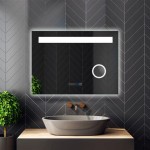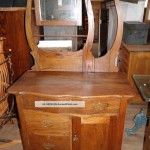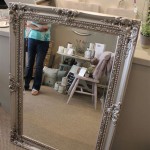Screen Mirroring Your Galaxy Tab A to a Sony Bravia TV: A Comprehensive Guide
Screen mirroring, also known as screen casting, is a technology that allows users to wirelessly transmit the display of one device to another. In today's digital environment, this capability is increasingly valuable, enabling users to share content, presentations, or personal media from their mobile devices onto larger screens for enhanced viewing experiences. Specifically, the ability to mirror a Samsung Galaxy Tab A to a Sony Bravia TV provides a seamless solution for viewing photos, videos, documents, and applications on a larger, more immersive display.
This article provides a detailed exploration of the methods and steps involved in successfully screen mirroring a Samsung Galaxy Tab A tablet to a Sony Bravia TV. It addresses several approaches, encompassing built-in functionalities like Smart View and Quick Connect, third-party application solutions, and troubleshooting common issues that may arise during the process. This information aims to equip readers with the knowledge necessary to establish a reliable and efficient screen mirroring connection between their devices.
Understanding the Prerequisites for Screen Mirroring
Before initiating the screen mirroring process, confirming that both the Samsung Galaxy Tab A and the Sony Bravia TV meet the essential prerequisites guarantees a smoother and more successful connection. These prerequisites typically involve compatibility factors, network configurations, and necessary settings adjustments.
Firstly, compatibility between the devices is crucial. While most recent models of both Samsung Galaxy Tab A tablets and Sony Bravia TVs support screen mirroring capabilities, it’s essential to confirm this compatibility based on the specific model numbers. Referencing the user manuals or technical specifications of both devices will provide definitive confirmation. Some older models may lack the necessary hardware or software protocols to support screen mirroring effectively.
Secondly, a stable and robust Wi-Fi network is indispensable. Screen mirroring relies on a wireless connection to transmit data between the tablet and the TV. A weak or inconsistent Wi-Fi signal can lead to buffering, lag, or disconnections during mirroring. Both the Galaxy Tab A and the Sony Bravia TV should be connected to the same Wi-Fi network. Ideally, a 5 GHz Wi-Fi network provides a more stable and faster connection compared to a 2.4 GHz network, especially when streaming high-definition content.
Thirdly, specific settings on both the Galaxy Tab A and the Sony Bravia TV might need to be adjusted. On the Sony Bravia TV, ensure that the screen mirroring function is enabled. This setting is typically found within the TV's input settings or network settings. Similarly, on the Galaxy Tab A, ensure that the Wi-Fi Direct feature is enabled, as it facilitates direct communication between the tablet and the TV without relying on a centralized router.
Finally, consider any firmware updates. Ensuring that both the Galaxy Tab A and the Sony Bravia TV are running the latest firmware versions is beneficial. Firmware updates often include improvements to connectivity, bug fixes, and enhanced support for newer devices and technologies. Regularly checking for and installing these updates can significantly improve the reliability of the screen mirroring connection.
Methods for Screen Mirroring: Utilizing Built-in Features
Samsung Galaxy Tab A tablets are equipped with built-in features like Smart View and Quick Connect, designed to simplify the screen mirroring process. These features are user-friendly and often provide the most straightforward method for establishing a connection with a compatible Sony Bravia TV.
Smart View is a Samsung-specific feature that allows users to easily mirror their device’s screen to a TV. To use Smart View, first swipe down from the top of the Galaxy Tab A screen to access the Quick Settings panel. Locate the Smart View icon and tap on it. The tablet will then begin searching for available devices. Ensure that the Sony Bravia TV is powered on and set to the appropriate input (screen mirroring or Miracast). Once the TV is detected, select it from the list of available devices. A connection request may appear on the TV screen, which needs to be accepted to initiate the screen mirroring session.
Quick Connect is another built-in feature that serves a similar purpose. This feature is also accessible from the Quick Settings panel. Tapping on the Quick Connect icon initiates a search for nearby devices. Similarly to Smart View, ensure the Sony Bravia TV is discoverable and select it from the list of available devices. Follow any prompts that appear on either the tablet or the TV to complete the connection process. Quick Connect can also be used to share files directly to the TV without mirroring the entire screen.
An alternative method utilizing the Miracast standard is also viable. Miracast is a wireless display technology that allows devices to transmit their screen to a compatible receiver, such as a Sony Bravia TV, without requiring a Wi-Fi network. To use Miracast, navigate to the screen mirroring settings on the Galaxy Tab A. This is typically found under Settings > Display > Cast or Wireless Display. Ensure that the TV’s Miracast functionality is enabled. The tablet will then scan for nearby Miracast-enabled devices. Select the Sony Bravia TV from the list, and the screen mirroring process will commence.
These built-in features offer a convenient and streamlined method for screen mirroring. However, their performance can be affected by factors such as network congestion, distance between devices, and interference from other wireless devices. In such cases, alternative methods, such as using third-party applications, may provide a more stable and reliable connection.
Utilizing Third-Party Applications for Enhanced Functionality
While built-in features provide a basic screen mirroring functionality, third-party applications often offer enhanced features, improved performance, and broader compatibility across different devices. Several screen mirroring applications are available on the Google Play Store, each with its own set of advantages and disadvantages.
One popular option is "AllCast." This application supports a wide range of devices, including Sony Bravia TVs, and allows users to stream photos, videos, and music from their Galaxy Tab A. AllCast also supports cloud storage services, enabling users to stream content directly from platforms like Google Drive or Dropbox. The application offers a user-friendly interface and generally provides a stable connection.
Another widely used application is "AirScreen." While primarily designed for iOS devices, AirScreen also supports screen mirroring from Android devices, including the Galaxy Tab A. AirScreen allows users to mirror their screen using AirPlay, Google Cast, or Miracast protocols, providing flexibility and compatibility with various TV models. The application also supports screen recording and cloud storage integration.
An alternative option is "LetsView." LetsView is a free screen mirroring application that supports both Android and iOS devices. It allows users to mirror their screen to a computer or TV without any limitations. LetsView offers features like screen recording, annotation, and full-screen display. The application is simple to use and provides a reliable connection between the Galaxy Tab A and the Sony Bravia TV.
When selecting a third-party application, it is crucial to consider factors such as compatibility with the Sony Bravia TV model, user reviews, features offered, and pricing (if applicable). Many applications offer a free trial period, allowing users to test the application's performance before committing to a paid subscription. Thoroughly researching and testing different applications can help identify the best solution for individual screen mirroring requirements.
Troubleshooting Common Screen Mirroring Issues
Despite following the appropriate steps, users may encounter issues during the screen mirroring process. Addressing these issues requires a systematic approach to identify the root cause and implement effective solutions. Common problems include connectivity issues, display problems, and audio problems.
Connectivity issues are among the most frequent challenges. If the Galaxy Tab A is unable to detect the Sony Bravia TV, ensure that both devices are connected to the same Wi-Fi network and that the TV’s screen mirroring function is enabled. Also, verify that the Wi-Fi network is stable and that the signal strength is adequate. Restarting both the tablet and the TV can often resolve temporary connectivity glitches. Additionally, disabling and re-enabling Wi-Fi on both devices can refresh the connection. If using Miracast, ensure that the TV and the tablet are within close proximity to each other.
Display problems can manifest as distorted images, black screens, or resolution mismatches. If the mirrored image appears distorted, check the display settings on both the Galaxy Tab A and the Sony Bravia TV. Ensure that the resolution settings are compatible with each other. Adjusting the aspect ratio on the TV can also resolve display issues. If the screen appears black, verify that the input source on the TV is correctly selected. In some cases, a firmware update on either the TV or the tablet can resolve display-related bugs.
Audio problems, such as no sound or distorted sound, can also occur during screen mirroring. Confirm that the audio output settings on the Galaxy Tab A are correctly configured. Select the appropriate audio output device (typically the TV). Verify that the volume levels on both the tablet and the TV are adequately adjusted. If the sound is distorted, try reducing the volume levels or adjusting the audio equalizer settings. In some cases, restarting both devices can resolve audio-related issues. Also, ensure that the TV’s audio output settings are configured to receive audio from the appropriate input source.
In addition to these common issues, interference from other wireless devices can also affect screen mirroring performance. Devices such as microwaves, Bluetooth devices, and other Wi-Fi routers can interfere with the wireless signal. Try moving the Galaxy Tab A and the Sony Bravia TV closer to each other and away from potential sources of interference. Changing the Wi-Fi channel on the router can also mitigate interference issues. Regularly clearing the cache and data of the screen mirroring application can also improve performance.

Galaxy Tab A How To Connect Screen Mirror Wirelessly Sony Smart Tv
How To Mirror From My Samsung Galaxy Tab S A Sony Bravia Tv Quora

How To Wirelessly Screen Mirror Samsung Tab On Smart Tv No App

How To Connect Samsung Tab Sony Tv Screen Mirror

Effortlessly Screen Mirroring Sony Tv With Samsung Phone 3 Steps

How To Cast Sony Tv From Android Free App Airbeamtv

Galaxy S6 S7 S8 S9 S10 How To Screen Mirror Sony Bravia Smart Tv

Galaxy Tab S7 How To Screen Mirror Use Samsung Dex On Sony Tv W Cable
Screen Mirroring Sony Bravia Apps On Google Play

Screen Mirroring Sony Bravia App For Android Bazaar








